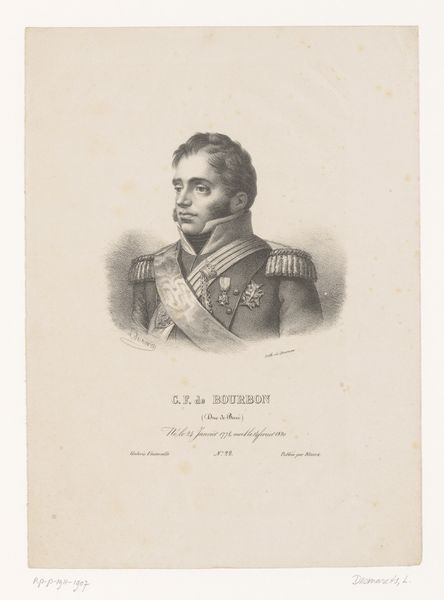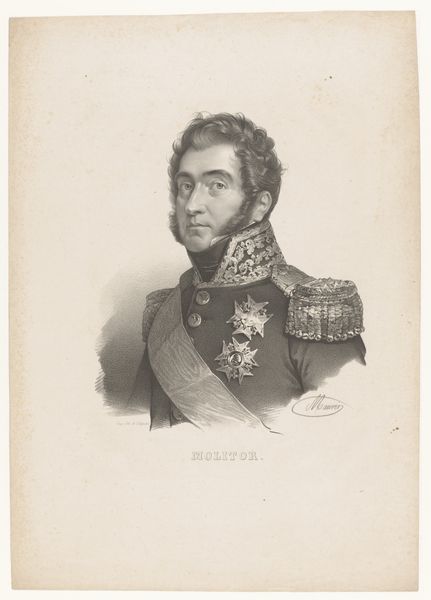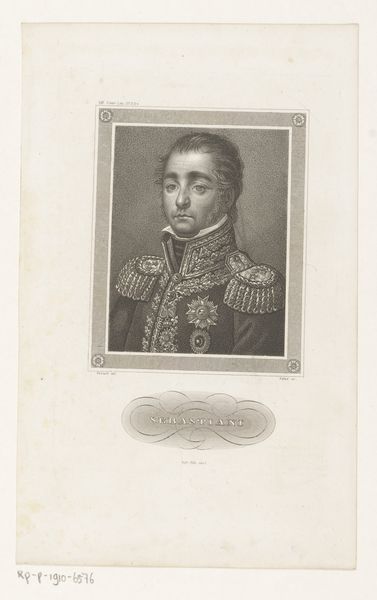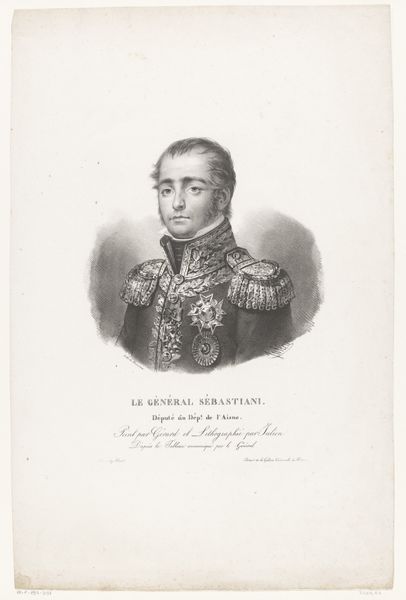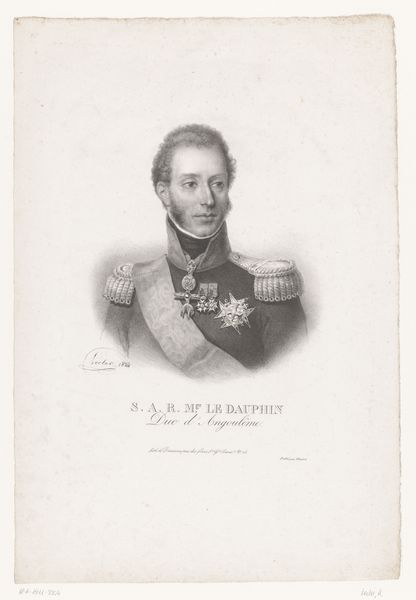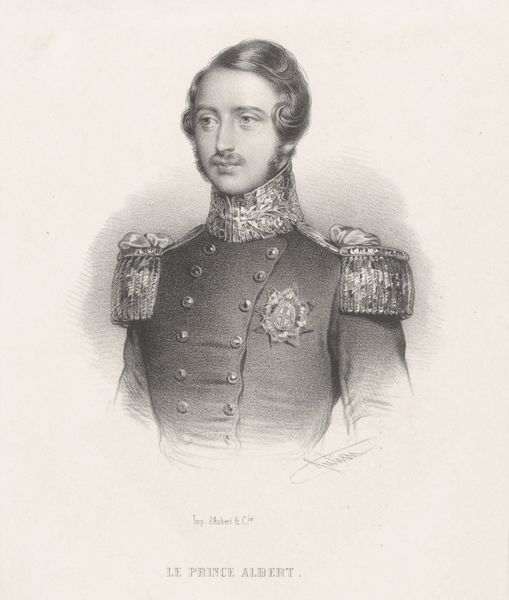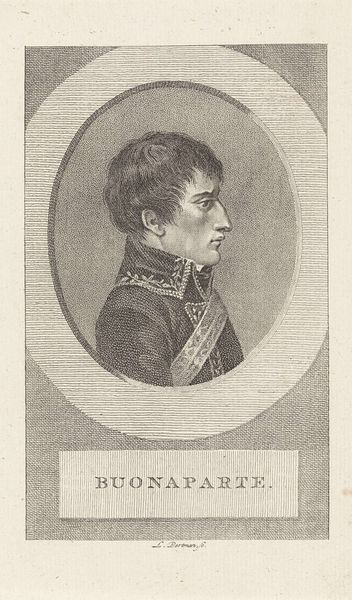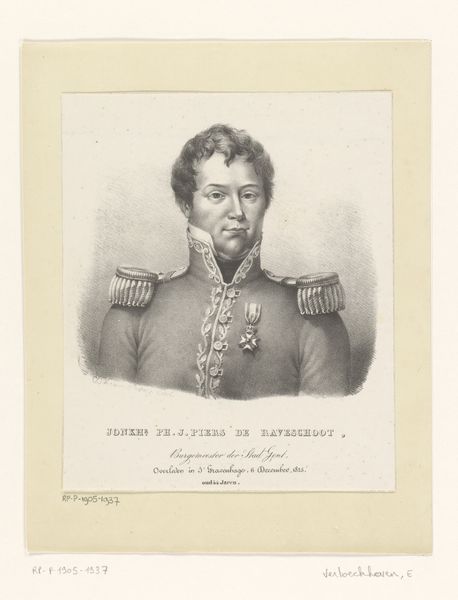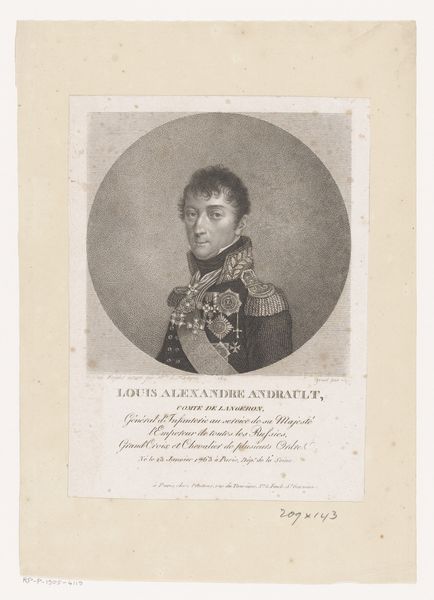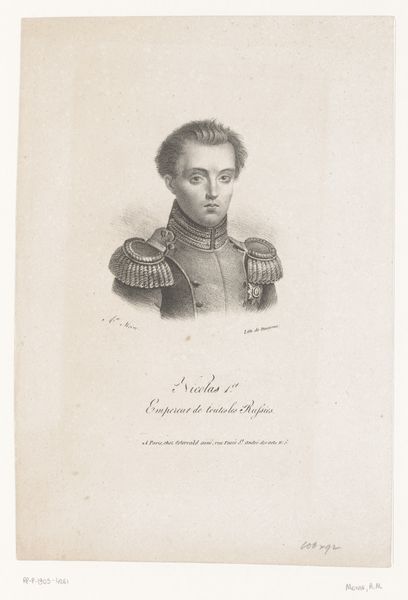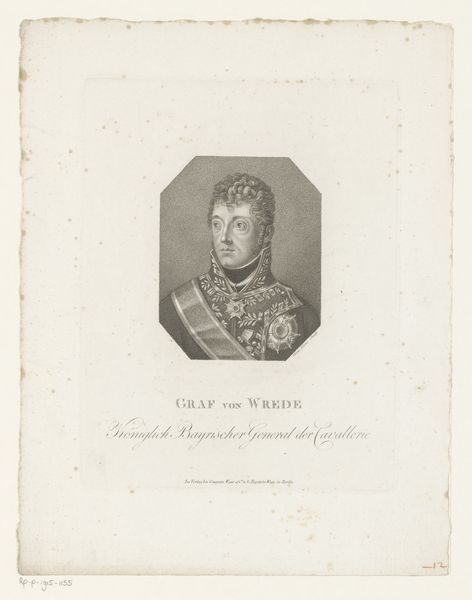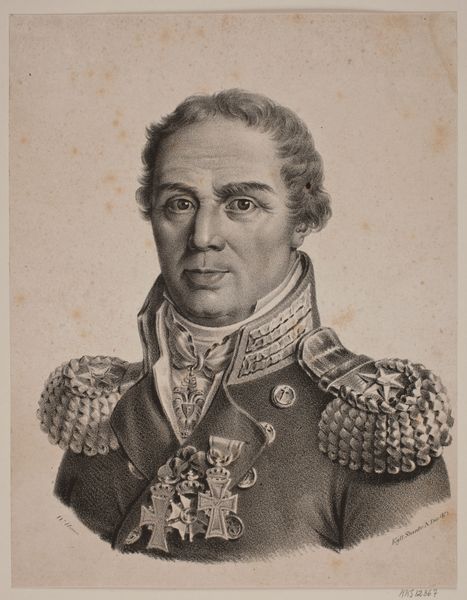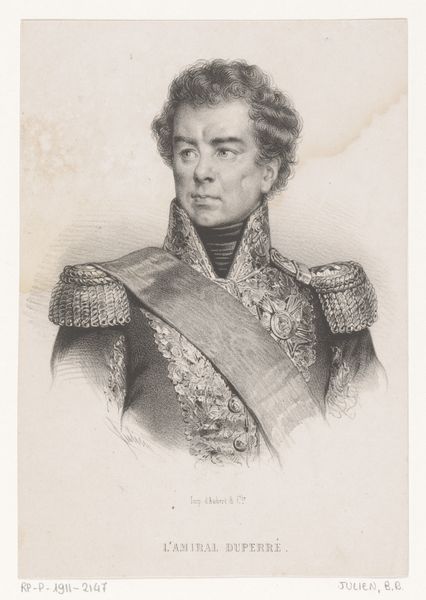
lithograph, print, pencil
#
portrait
#
pencil drawn
#
neoclacissism
#
lithograph
# print
#
pencil drawing
#
pencil
Dimensions: height 204 mm, width 153 mm
Copyright: Rijks Museum: Open Domain
Curator: Looking at this portrait, I’m immediately struck by the air of… well, let’s call it quiet contemplation. The subject’s gaze seems fixed just beyond us, lost in thought. Editor: Indeed. We are looking at a lithograph from 1823 by Auguste Toussaint Lecler, titled "Portret van Étienne Macdonald," depicting the French Marshal and Duke of Taranto. What I find particularly interesting is that this image was created using lithography, which was at the time, a relatively new and democratizing technology for printmaking. Curator: Democratizing! Interesting way to frame a portrait of a Duke. But yes, there's something about the softness of the lines, especially achieved through lithography, that gives it an accessible quality, a feeling like one is witnessing a private moment, rather than observing some imposing figurehead. Almost feels like the image wants to smudge the edges. Editor: Absolutely. Consider the materials themselves, a departure from engravings or etchings. The lithographic stone offered a more direct way for artists to create multiple editions, bringing images to a wider audience, though often, such multiplication relies on low-paid printing laborers. Macdonald here—an important figure in Napoleonic France—becomes reproducible. Curator: And yet, it’s hard to forget the trappings of power he embodies. The elaborate military dress, those medals glittering… even in a lithograph print. It creates an interesting tension, don’t you think? Editor: It does. The detailed depiction of his uniform and decorations showcases the skill involved in transferring the image onto stone, the labor of reproducing markers of status. Was this, perhaps, intended as a means to disseminate, not just an image, but the *idea* of authority? Or simply a method to fulfill a certain demand? Curator: Perhaps both? Maybe Lecler saw a touch of vulnerability beneath the medals. And by depicting him via this technique, suggests something more personal beneath it all. Lithography capturing something real beneath the status? Editor: It leaves me wondering about the market for these prints and who was buying and consuming images of power. It seems Lecler's focus on production reminds us art is never truly detached from its socio-economic context. Curator: Well, next time I need a portrait done, I'm commissioning a lithograph! Something so accessible and ephemeral feeling in the face of this subject so entrenched. I think it gives a perspective that even he perhaps wasn't privy to. Editor: And next time you do, let's explore the economics behind the portrait!
Comments
No comments
Be the first to comment and join the conversation on the ultimate creative platform.
